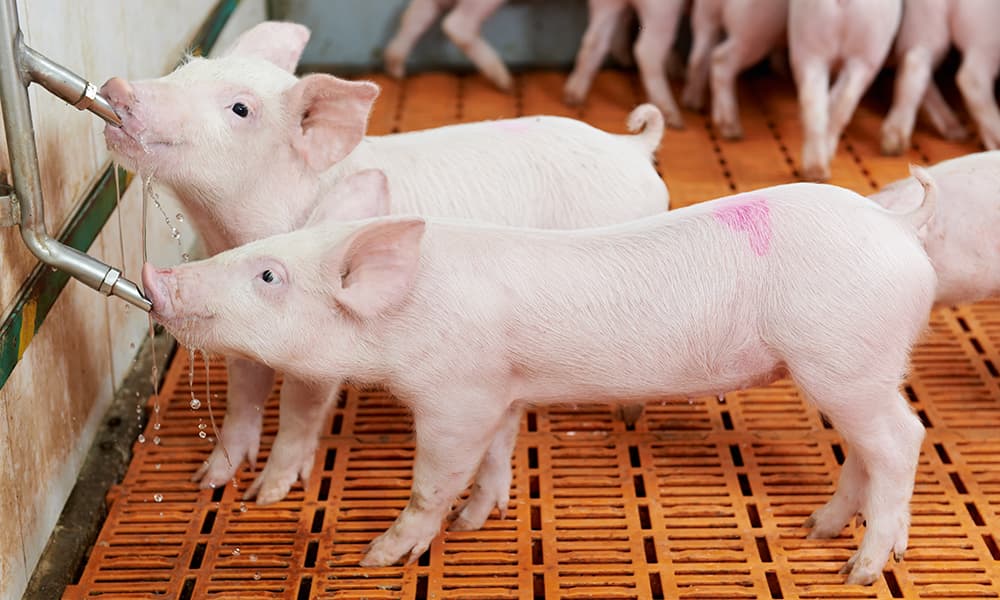External Biosecurity
Prevent diseases from entering your farm
An important element of biosecurity is preventing the introduction of disease into a farm. This is achieved by practicing stringent external biosecurity on your swine farm. In this module, we will learn in-depth about external biosecurity.
Isolate new incoming animals to check their health status and ensure they are disease-free.
- Keep in a separate barn located at least 500 yards away from the animal barns)
- Purchase incoming stock from a single source with known health status when possible
- Quarantine for 30-40 days
- Obtain animals health certificates from the purchasing source
- Observe the animals for signs and symptoms of any disease
- Get animals’ physical examinations done by a veterinarian
- Test the animals for suspected or susceptible infectious diseases, as advised by the veterinarian
- Vaccinate the incoming stock as advised by the veterinarian
- Enter and exit animals in and out of the quarantine barn from the same doorway
- Clean and disinfect the quarantine barn between each incoming stock
- Tend to animals in quarantine after tending to all other animals on the farm (except sick animals)
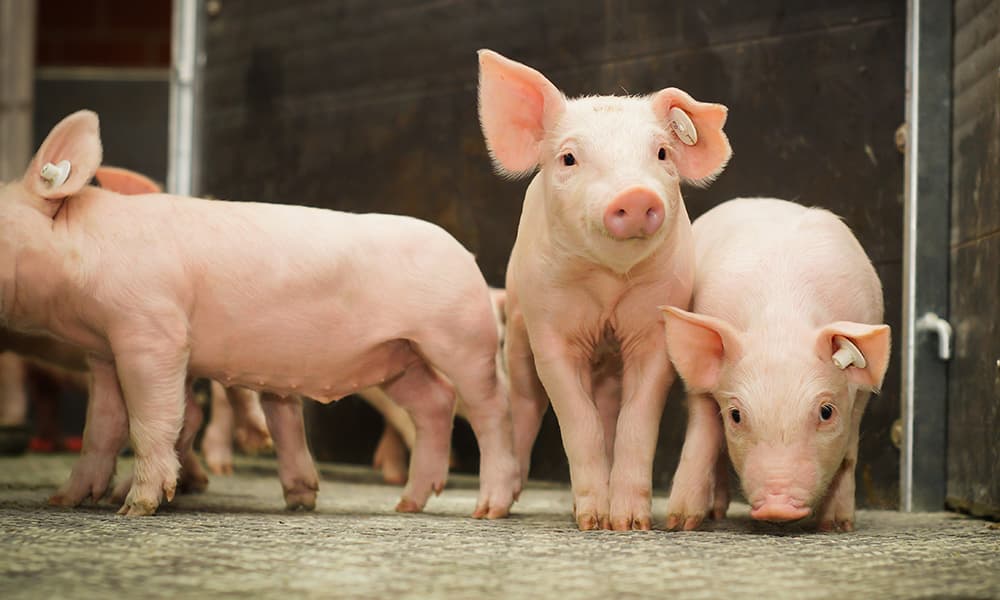
- Can use a boar or artificial insemination (AI), though AI is recommended over boar for better farm biosecurity
- Obtain semen/boar from certified sources with disease-free status
- Follow all biosecurity protocols while transporting, collecting, storing, and using the semen by AI
- Have a designated area for loading and unloading of animals
- Follow strict biosecurity protocols
Vehicles, especially those transporting animals or visiting multiple livestock farms, act as a carrier for various pathogens that are of high risk to the susceptible farm animals (like PRRS virus and PEDv)
- Restrict vehicle entry into the farm facilities
- Maintain logbook entry for all the vehicles entering the farm
- Designate parking spaces for vehicles
- Clean and disinfect vehicles transporting animals both before and after use
- Construct/allocate off-site location (with separate entrance if possible) for garbage truck, dead animal pick-up truck, feed and other delivery trucks that lies outside the farm premises
- Clean and disinfect wheels of vehicles entering the farm premises
- Communicate biosecurity protocols with the feed delivery personnel in advance
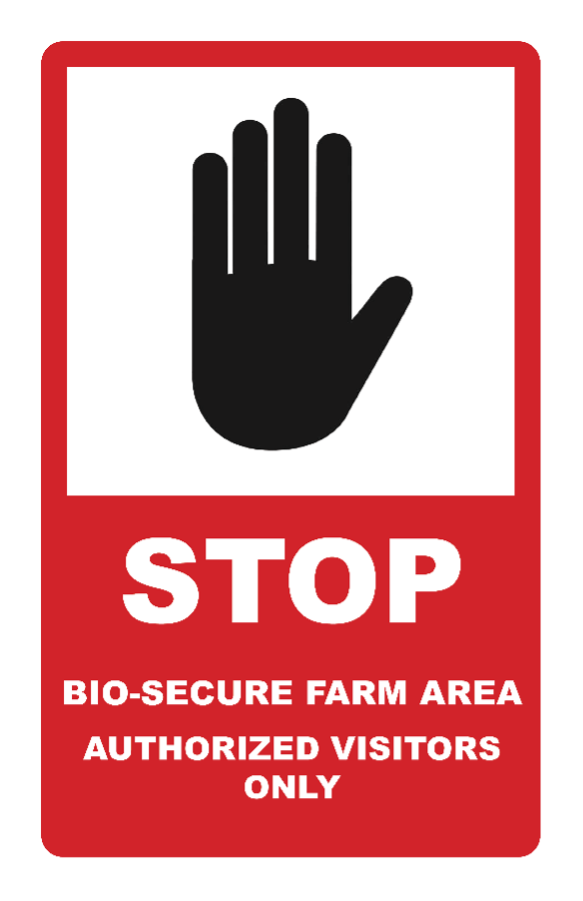
Place signs near the first point of entry to limit unauthorized vehicles and people.
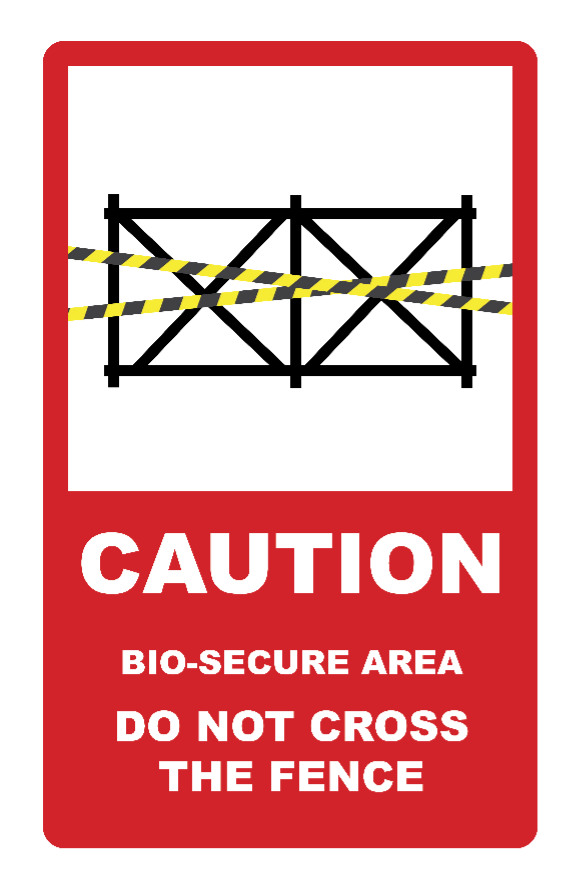
Place signs near the first point of entry to limit unauthorized vehicles and people.
Personnel working on the farm or visitors visiting the farm must follow biosecurity protocols when entering the farm. People may transfer pathogens from their boots, clothes, or body to surfaces or animals.
Shower-in-shower-out (Danish entry system)
- Dip boots in the foot bath at the entrance
- Enter the designated entrance area
- Remove all clothes and boots
- Wash hands
- Enter the shower area and take a head shower using soap solution
- Enter the clean area without going back into the dirty area
- Put on farm specific clothes and coverall
- Enter the farm
- Repeat the same process when exiting the farm
If the farm shower in and shower out is unavailable, remove coveralls and boots, wash hands, enter the clean area and change into farm-specific coveralls and boots.
If farm-specific coveralls and boots are unavailable, cover clothes and boots with disposable coveralls.
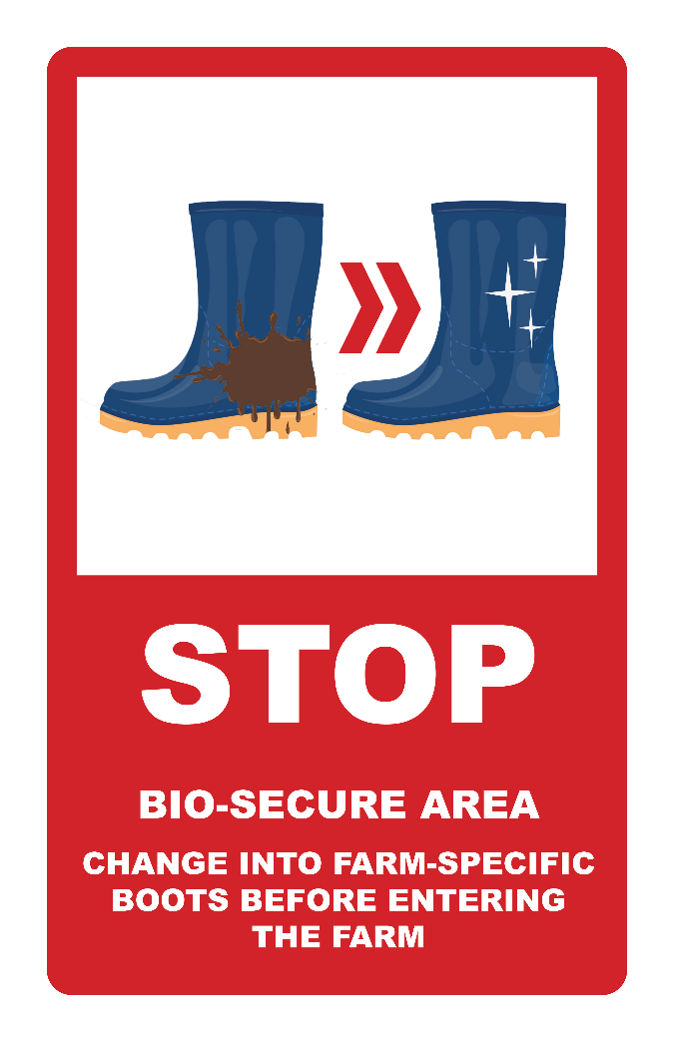
Indicate personnel must change into farm-specific boots and clothes before entering.
Visitors and Logbook
It is vital to restrict the entry of an unauthorized person into the farm and minimize and regulate authorized farm visitors as well. They pose a high risk to the animals and can breach biosecurity measures if protocols are ignored.
- Make prior appointments, authorizing only those visitors that have a good reason to visit the farm
- Make a logbook entry for every visitor entering the farm noting:
- Name
- Date
- Vehicle’s details
- Contact information
- Reason for visit
- Foreign travel history in last 1 month
- Contact with farm animals in last 48-72 hours/date of last contact with pigs
Caution
- Do not authorize visitors who have a history of foreign travel to countries with positive status of foreign animal diseases like African swine fever and foot and mouth disease
- Do not authorize visitors who have been in contact with farm animals in the last 48-72 hours
- Communicate the farm biosecurity protocols to be followed during their visit (like shower-in-shower-out or change of coveralls before entering the farm)
- Instruct visitors not to carry any food items (especially of animal origin)
- Instruct visitors not to feed or pet animals
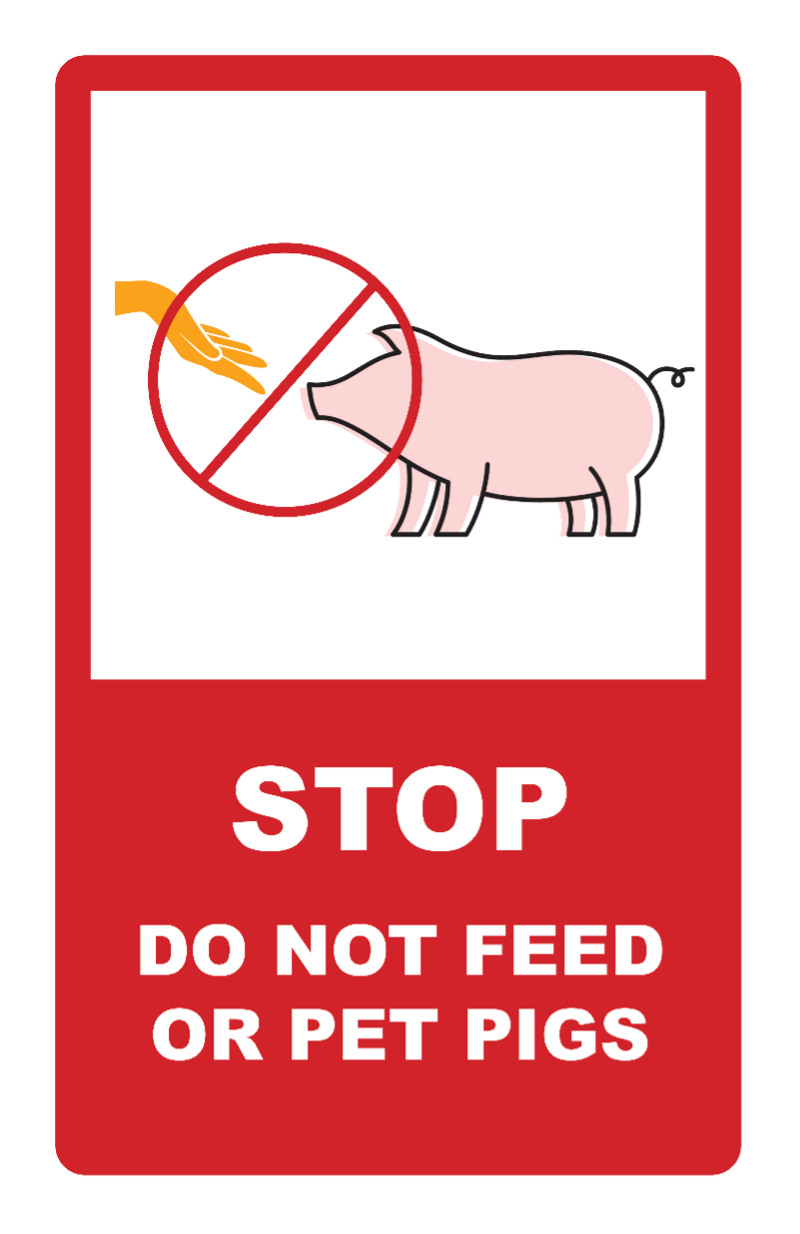
Indicate visitors to not feed or pet animals.
- Keep the watering system clean
- Test the water for pathogens regularly
- Treat or chlorinate well and surface water before use
- Clean and disinfect the water storage tanks, pipes, and waterers regularly to prevent biofilm forming on the surface
Every farm must have a pest and wild animal control plan implemented on their farm. Pests like rodents, mosquitoes, flies, ticks, lice, and birds transmit pathogens that can seriously risk swine health by moving between barns and sheds. Wild animals, especially wild boars, must be kept away from domestic pigs and farm premises. They may carry diseases or mate with the sows and transmit disease.
Pests
- Barns and other structures should be rodent proof
- Install mosquito nets in animal housing
- Regularly use pesticides for extermination
- Avoid and clean up feed spills
- Avoid garbage or dead animal stocking for many days
- Regularly check for cracks and breaches in the farm building
Birds
- Install bird-proof mesh around the animal housing
- Regularly check mesh for damages
Wild Animals
- Use fencing in open rearing systems
- Use high-walls in close rearing systems
- Electric outer fencing is also a good alternative
- Restrict pet entry
What’s Next?
Not all external biosecurity practices described in this module might be useful or applicable in your farm settings but now you understand the practices involved in preventing the disease from entering a swine farm. Consult a veterinarian or a biosecurity officer to identify which practices apply to your farm’s needs.

